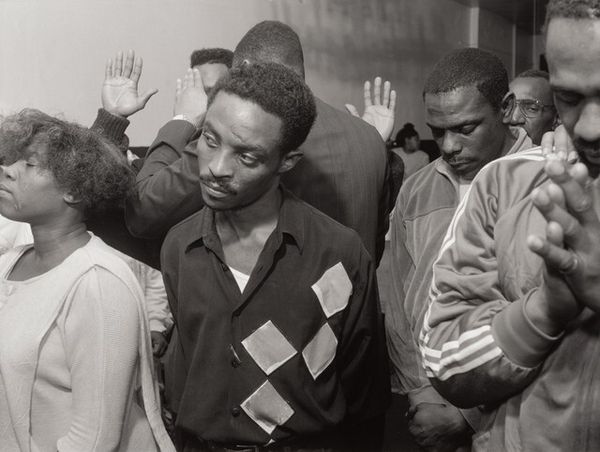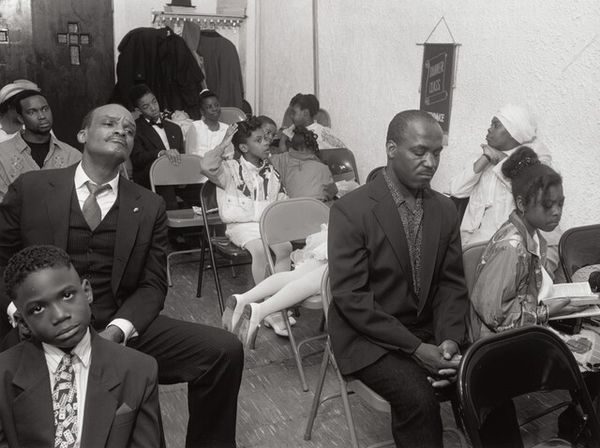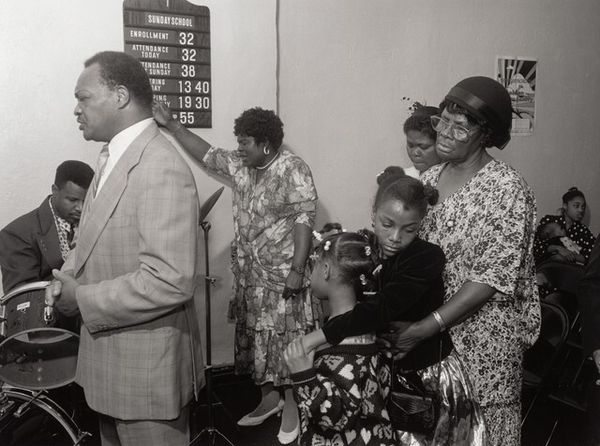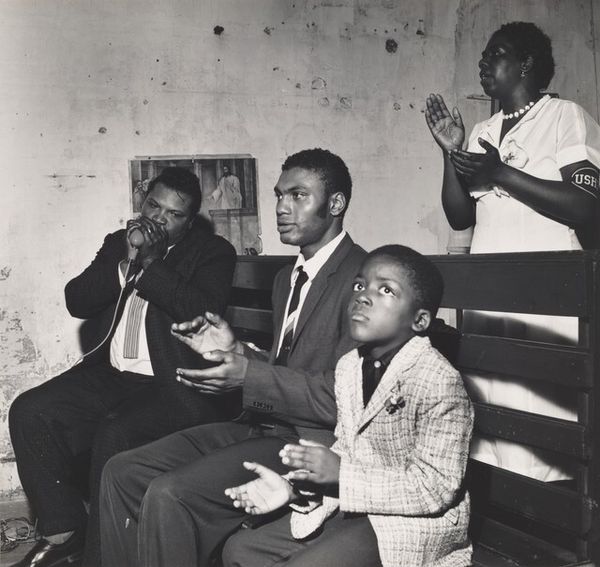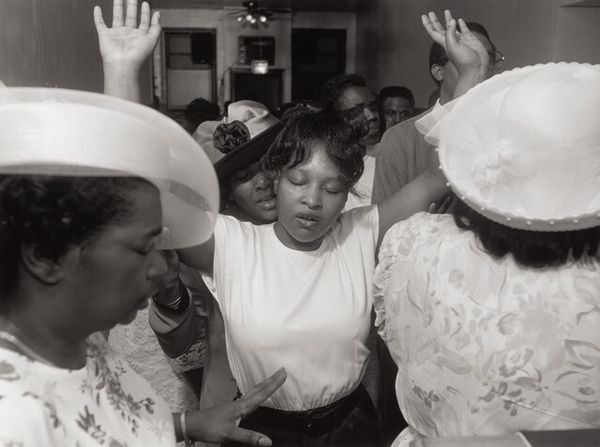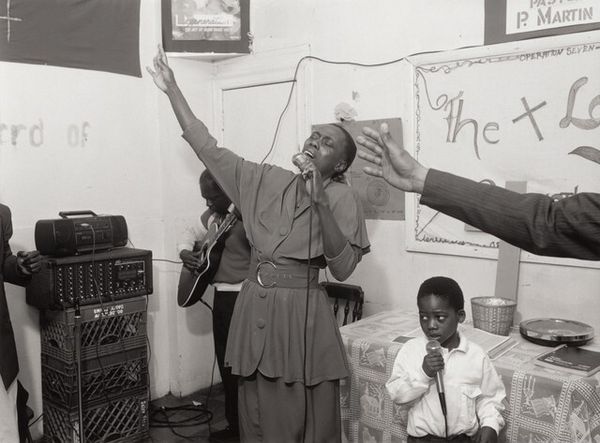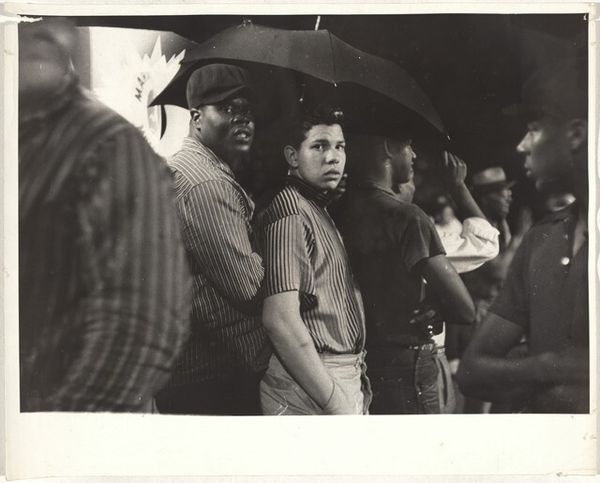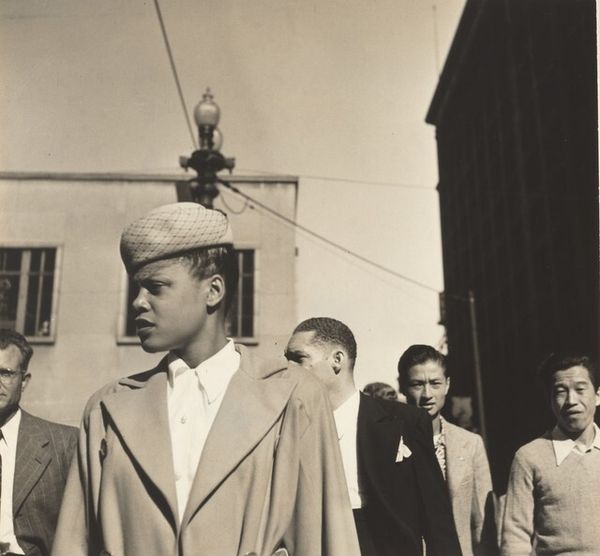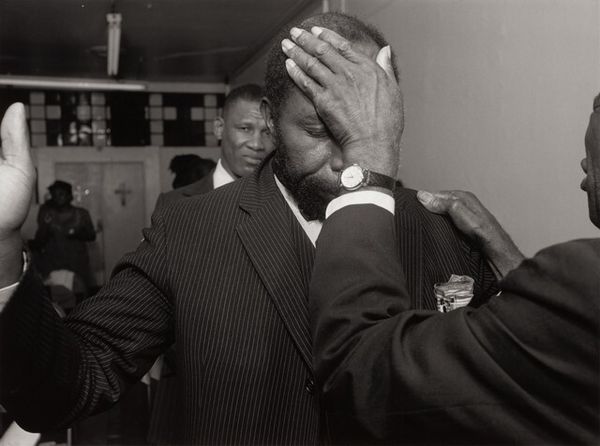
photography, gelatin-silver-print
#
portrait
#
black and white photography
#
black and white format
#
photography
#
black and white theme
#
group-portraits
#
gelatin-silver-print
#
monochrome photography
#
photographic element
#
realism
#
monochrome
Dimensions: image: 24.1 × 32.5 cm (9 1/2 × 12 13/16 in.) sheet: 27.94 × 35.56 cm (11 × 14 in.)
Copyright: National Gallery of Art: CC0 1.0
Curator: This photograph, simply titled "Untitled," was taken by Thomas Roma in 1993. It's a gelatin silver print, presented in monochrome. What are your immediate impressions? Editor: Well, the monochrome lends a timeless quality, almost like stepping back into history. The subjects, though, feel present, engaged... that guy in the front with the coat slung over his shoulder has such an intriguing gaze. It makes you wonder what's on his mind, his connection to this group. Curator: Absolutely. The realism in Roma's work draws us into the scene and demands that we consider each subject's role. This photograph acts as an incredible record of its time, raising key questions surrounding issues such as community, faith, and social identity. Consider how photographic elements of composition can intersect with cultural narratives and reveal shared human experiences. Editor: I like how he captured this moment with such directness. There's this beautiful tension, don’t you think? The three people in the foreground are clearly subjects of this gathering, seemingly mid-oath. What oath are they taking, I wonder? And who or what are they swearing it to? It's strangely compelling...almost ritualistic. I bet a good storyteller could build a fascinating world out of this one frame. Curator: Roma often focused on capturing the human condition in New York City. In much of his oeuvre, Roma sheds light on disenfranchised communities, often choosing realism to communicate what might otherwise be difficult to convey in words. Editor: Knowing this gives the photograph such new weight. He’s not just showing us people in a space, he's giving a voice to a segment of society that may otherwise remain unheard. Curator: I agree. By positioning viewers as witnesses, he implicates us in the subjects’ lives and experiences. These faces prompt the kind of reflection on which progressive change relies. Editor: Yeah, it is funny though… art often does that, doesn't it? You stare at a captured moment, and the questions it triggers turn into some weird mirror reflecting yourself back at you. Curator: Precisely, and isn't that the beauty of it all? Editor: Amen to that.
Comments
No comments
Be the first to comment and join the conversation on the ultimate creative platform.

